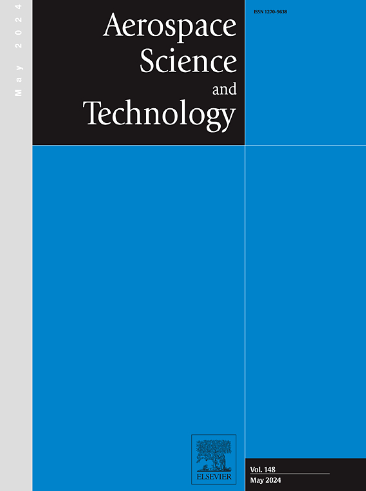Multi-fidelity simulation of inlet mode transition with smooth thrust of turbine based combined cycle
IF 5
1区 工程技术
Q1 ENGINEERING, AEROSPACE
引用次数: 0
Abstract
A multi-fidelity simulation method of external and internal flow has been developed using commercial software to achieve a smooth thrust of the turbine-based combined-cycle (TBCC) propulsion system. This platform enables the investigation of the flow field and performance of the TBCC propulsion system at different mode transition schemes. The integrated multi-fidelity simulation includes the inlet, turbojet engine, ramjet engine, and nozzle, providing insights into the operation process of the TBCC propulsion system during the transition from turbojet mode to ramjet mode. Three mode transition schemes are proposed: critical mode transition, constant aerodynamic interface plane (AIP) Mach number mode transition, and linear mode transition. From the perspective of TBCC inlet, the performance of the critical mode transition exhibits the best performance among these mode transition schemes, while the linear mode transition performs the worst. However, from the viewpoint of the TBCC propulsion system and the hypersonic vehicle, the performance of constant AIP Mach number mode transition is the best. The non-dimensional thrust increases almost linear from 1.0 to 1.2, enabling hypersonic vehicle to accelerate steadily during the transition from turbojet mode to ramjet mode.
多保真模拟涡轮机联合循环平滑推力的进气模式转换
利用商业软件开发了一种外部和内部流动的多保真模拟方法,以实现基于涡轮机的联合循环(TBCC)推进系统的平稳推力。该平台可用于研究不同模式转换方案下 TBCC 推进系统的流场和性能。多保真度集成仿真包括进气口、涡轮喷气发动机、冲压喷气发动机和喷嘴,有助于深入了解 TBCC 推进系统从涡轮喷气模式过渡到冲压喷气模式的运行过程。提出了三种模式转换方案:临界模式转换、恒定气动界面平面(AIP)马赫数模式转换和线性模式转换。从 TBCC 入口的角度来看,临界模式转换的性能在这些模式转换方案中表现最好,而线性模式转换的性能最差。然而,从 TBCC 推进系统和高超音速飞行器的角度来看,恒定 AIP 马赫数模式转换的性能最好。非尺寸推力从 1.0 到 1.2 几乎呈线性增长,使高超音速飞行器在从涡轮喷气模式过渡到冲压喷气模式的过程中稳步加速。
本文章由计算机程序翻译,如有差异,请以英文原文为准。
求助全文
约1分钟内获得全文
求助全文
来源期刊

Aerospace Science and Technology
工程技术-工程:宇航
CiteScore
10.30
自引率
28.60%
发文量
654
审稿时长
54 days
期刊介绍:
Aerospace Science and Technology publishes articles of outstanding scientific quality. Each article is reviewed by two referees. The journal welcomes papers from a wide range of countries. This journal publishes original papers, review articles and short communications related to all fields of aerospace research, fundamental and applied, potential applications of which are clearly related to:
• The design and the manufacture of aircraft, helicopters, missiles, launchers and satellites
• The control of their environment
• The study of various systems they are involved in, as supports or as targets.
Authors are invited to submit papers on new advances in the following topics to aerospace applications:
• Fluid dynamics
• Energetics and propulsion
• Materials and structures
• Flight mechanics
• Navigation, guidance and control
• Acoustics
• Optics
• Electromagnetism and radar
• Signal and image processing
• Information processing
• Data fusion
• Decision aid
• Human behaviour
• Robotics and intelligent systems
• Complex system engineering.
Etc.
 求助内容:
求助内容: 应助结果提醒方式:
应助结果提醒方式:


